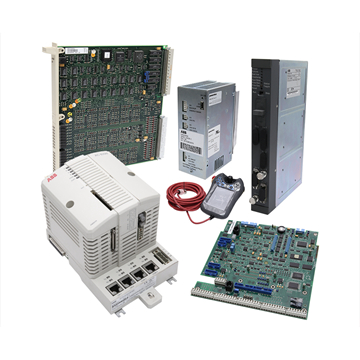Unlock the Secrets of Motor Drivers: Discover Their Types, Applications, and How They Power Your World!
Motor drivers are crucial components in the world of electronics and automation, acting as the bridge between control systems and the motors that execute movement. These devices convert control signals into power that drives motors, enabling them to perform various tasks, from simple movements in toys to complex operations in industrial machines. Understanding motor drivers is vital for anyone involved in robotics, automation, or even hobbyist electronics, as they play a significant role in ensuring efficiency and precision. In this article, we will delve into the different types of motor drivers, their applications across various industries, and how they function to power the technology we rely on daily.

Understanding Motor Drivers
At its core, a motor driver is an electronic device that controls the operation of a motor. It takes low-power control signals from a microcontroller or a similar device and translates them into higher power signals that can drive the motor. This process is essential because most control systems operate at low voltages and currents, while motors require significantly more power to function effectively. Motor drivers utilize various techniques to manage the voltage and current supplied to the motor, ensuring that it operates smoothly and efficiently. The importance of motor drivers extends across numerous technologies, from powering electric vehicles to enabling the precise movements of robotic arms in manufacturing. Understanding how these drivers work is key to optimizing their performance in various applications.
Types of Motor Drivers
Motor drivers come in various types, each designed to cater to specific motors and applications. The three primary categories are DC motor drivers, stepper motor drivers, and servo motor drivers, each possessing unique characteristics and functionalities. DC motor drivers are widely used for their simplicity and efficiency, while stepper motor drivers excel in applications requiring precise control of movement. Servo motor drivers, on the other hand, are indispensable in scenarios where accurate positioning and speed control are critical. Let's explore each type in detail.
DC Motor Drivers
DC motor drivers are among the most common types of motor drivers. They control the speed and direction of direct current (DC) motors by varying the voltage applied to the motor. A popular application of DC motor drivers is in robotics; for instance, a friend of mine once built a small robot for a science fair project, using DC motors controlled by a simple motor driver circuit. This setup enabled the robot to navigate through obstacles, showcasing the driver’s ability to manage motor functions effectively. DC motor drivers are also used in various consumer electronics, such as fans, pumps, and toys, due to their ease of use and flexibility.
Stepper Motor Drivers
Stepper motor drivers are designed for controlling stepper motors, which move in discrete steps rather than continuous rotation. This capability allows for precise control over position and speed, making stepper motors ideal for applications like 3D printing and CNC machines. The driver sends a series of pulses to the motor, instructing it to move a specific number of steps, enabling accurate positioning. A friend who works in a maker space shared her experience of using stepper motors in a 3D printer, where the precision offered by stepper motor drivers was essential for producing high-quality prints.
Servo Motor Drivers
Servo motor drivers are specialized for controlling servo motors, which are designed for precise control of angular position. These drivers receive a signal that indicates the desired position of the motor and adjust the motor’s movement accordingly. Servo motors are widely used in robotics applications, such as robotic arms and drones, where precision and responsiveness are paramount. In the manufacturing sector, servo motors play a crucial role in automated assembly lines, ensuring that machines operate efficiently and accurately.
Applications of Motor Drivers
Motor drivers find applications across a plethora of industries, demonstrating their versatility and importance. In robotics, they enable the precise movement required for tasks like assembly, welding, and painting. Automation systems use motor drivers to control conveyor belts and other machinery, increasing efficiency and productivity. In the automotive industry, motor drivers are essential for electric vehicle systems, controlling everything from the main drive motors to auxiliary systems like power steering and window lifts. Additionally, consumer electronics, such as drones and smart appliances, leverage motor drivers to enhance functionality and user experience.
How Motor Drivers Power Your World
The impact of motor drivers on everyday technology is profound. They enhance the performance and efficiency of devices we often take for granted. For instance, in home appliances, motor drivers contribute to energy-efficient operation, ensuring that machines use only the power necessary for their tasks. In robotics, the precision enabled by motor drivers leads to improved outcomes, whether in manufacturing or personal projects. As technology continues to advance, the role of motor drivers is expected to expand, further embedding them into the fabric of our daily lives.
Significance of Motor Drivers in Modern Technology
Understanding motor drivers is essential for anyone interested in electronics, robotics, or automation. From DC, stepper, to servo motor drivers, each type offers unique advantages that cater to specific applications across various industries. As we continue to innovate and integrate technology into our lives, the importance of motor drivers will only grow. Whether you're a hobbyist, a student, or a professional, exploring the different types and applications of motor drivers can open up new opportunities and insights in your field of interest.








